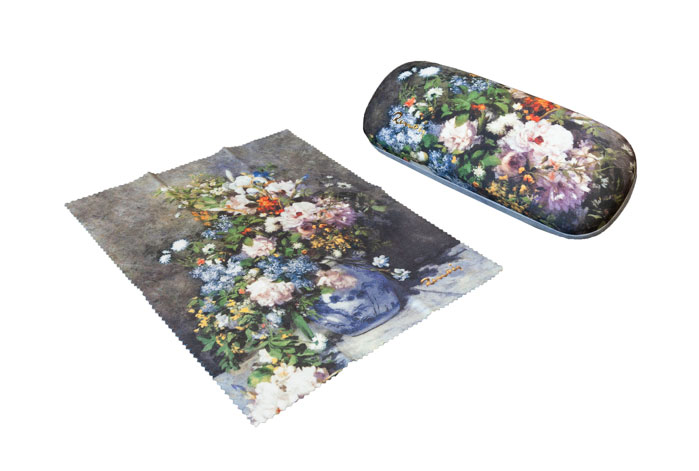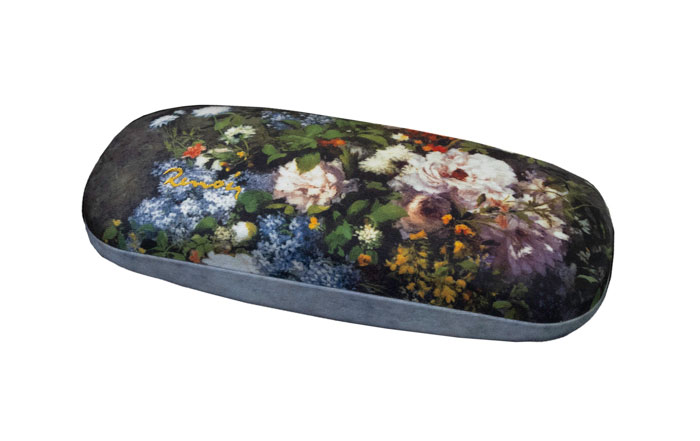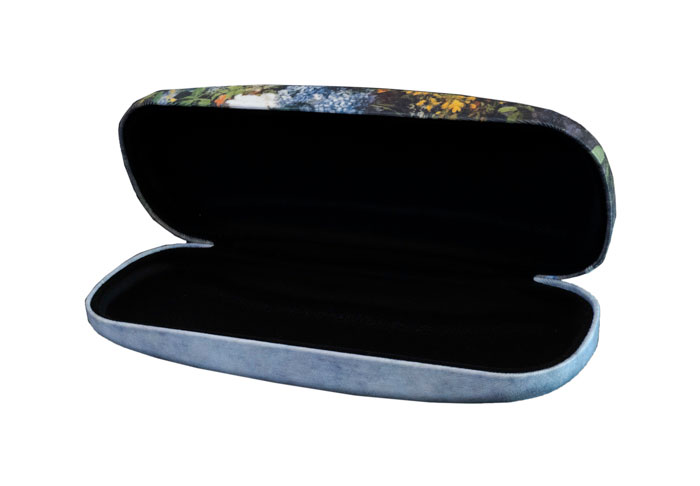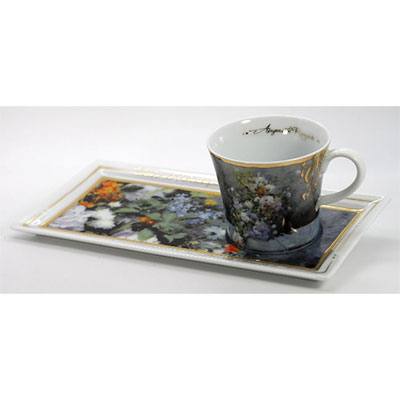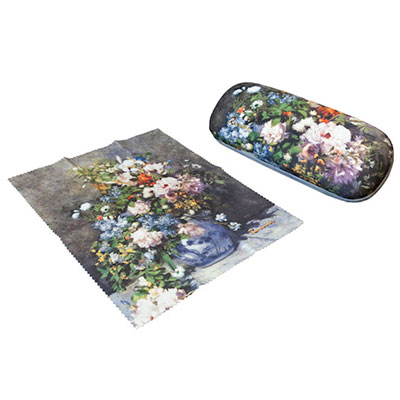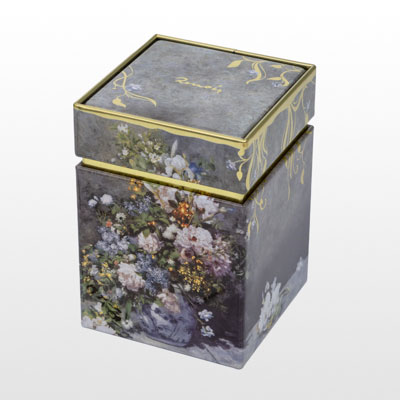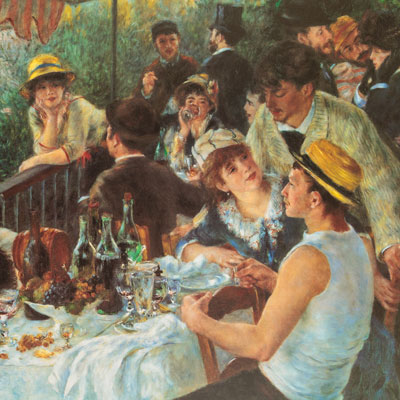Tel : (+33) 4 94 63 18 08
9am - 6pm from Monday to Sunday
All products Pierre-Auguste Renoir • Products of the topic Flowers
Renoir Eyesglass case : Spring bouquet
REF : REN-ELU-01
In stock
Only 1 in stock
Unavailable
19,90 €
(21.53 USD)
Pierre Auguste Renoir Eyesglass case : Spring bouquet
Solid hard-shell case with fabric cover pleasant touch, strong and secure metal clasp inside of case lined with soft felt.
This case suits as well for prescription glasses as for sunglasses.
Dimensions : 16 x 5.5 cm
Dimensions of the microfiber cleaning cloth : 15 x 18 cm
Impressionism
The Impressionist movement in painting emerged in France in the 1870s and developed until the end of the 19th century. It was characterized by the use of light and color to capture impressions of the surrounding world, rather than accurately representing reality. Impressionists also used rapid brushstrokes and vibrant colors to capture the effect of changing light on objects and landscapes. The main Impressionist artists included Claude Monet, Edgar Degas, Pierre-Auguste Renoir, Camille Pissarro, and Berthe Morisot. Famous works by Monet include "Impression, Sunrise" (1872), "Water Lilies" (1905-1926), and "The Bridge at Argenteuil" (1874). Degas is known for his paintings of ballet scenes such as "The Dance Class" (1871) and "Dancers Resting" (1879), as well as numerous paintings of women bathing. Renoir is known for his paintings of everyday life scenes such as "The Ball at the Moulin de la Galette" (1876) and "The Large Bathers" (1884-1887). Pissarro produced many landscape paintings including "Place du Théâtre-Français" (1898) and "Boulevard Montmartre, Spring Morning" (1897). Morisot is known for her numerous paintings of women and everyday life scenes such as "The Boating Party" (1881) and "Young Girl at the Window" (1870). In addition to these famous artists, the Impressionist movement was also influenced by artists such as Paul Cézanne, Paul Gauguin, and Vincent Van Gogh. Cézanne is known for his landscape paintings of the area around his hometown of Aix-en-Provence, as well as his still life paintings. The Impressionist movement was initially criticized by art conservatives for several reasons. Firstly, Impressionists were criticized for their unconventional use of color and light. While traditional painters strived to represent colors accurately and realistically, Impressionists used brighter and more vibrant colors, and employed painting techniques like pointillism to create effects of light and movement. Secondly, Impressionists were criticized for their lack of respect for academic rules and traditional perspective. While academic painters strived to represent objects accurately and realistically, Impressionists chose to represent objects more abstractly and stylized, focusing on the sensations and emotions they wanted to convey rather than the precision of representation. Finally, the Impressionist movement was criticized for its lack of political and social substance. While many painters of the time engaged in important political and social subjects, Impressionists chose to focus on lighter and more everyday subjects, such as scenes of everyday life and landscapes. Due to these criticisms, the Impressionist movement had trouble finding an audience at first, and its members often had difficulty selling their works. However, the movement eventually gained popularity in the 1880s and 1890s and eventually became one of the most famous and influential artistic movements in history.
Discover the artist
Renoir Pierre-Auguste
Pierre-Auguste Renoir was a French painter and one of the leading Impressionists, despite the fact that he preferred portraits to landscapes!
His group scenes, his sense of "dynamic" posing, his classicism and his love for Raphael made him an impressionist apart. Having started with Monet, he knew how to find his own approach to let his vision of the world express itself.
It should be noted that he is also the father of Jean Renoir, one of the great masters of French cinema of the 1930s.
Renoir Pierre-Auguste
Pierre-Auguste Renoir was a French painter and one of the leading Impressionists, despite the fact that he preferred portraits to landscapes!
His group scenes, his sense of "dynamic" posing, his classicism and his love for Raphael made him an impressionist apart. Having started with Monet, he knew how to find his own approach to let his vision of the world express itself.
It should be noted that he is also the father of Jean Renoir, one of the great masters of French cinema of the 1930s.
Renoir Pierre-Auguste
Pierre-Auguste Renoir was a French painter and one of the leading Impressionists, despite the fact that he preferred portraits to landscapes!
His group scenes, his sense of "dynamic" posing, his classicism and his love for Raphael made him an impressionist apart. Having started with Monet, he knew how to find his own approach to let his vision of the world express itself.
It should be noted that he is also the father of Jean Renoir, one of the great masters of French cinema of the 1930s.
Renoir Pierre-Auguste
Pierre-Auguste Renoir was a French painter and one of the leading Impressionists, despite the fact that he preferred portraits to landscapes!
His group scenes, his sense of "dynamic" posing, his classicism and his love for Raphael made him an impressionist apart. Having started with Monet, he knew how to find his own approach to let his vision of the world express itself.
It should be noted that he is also the father of Jean Renoir, one of the great masters of French cinema of the 1930s.
Renoir Pierre-Auguste
Pierre-Auguste Renoir was a French painter and one of the leading Impressionists, despite the fact that he preferred portraits to landscapes!
His group scenes, his sense of "dynamic" posing, his classicism and his love for Raphael made him an impressionist apart. Having started with Monet, he knew how to find his own approach to let his vision of the world express itself.
It should be noted that he is also the father of Jean Renoir, one of the great masters of French cinema of the 1930s.




























































































